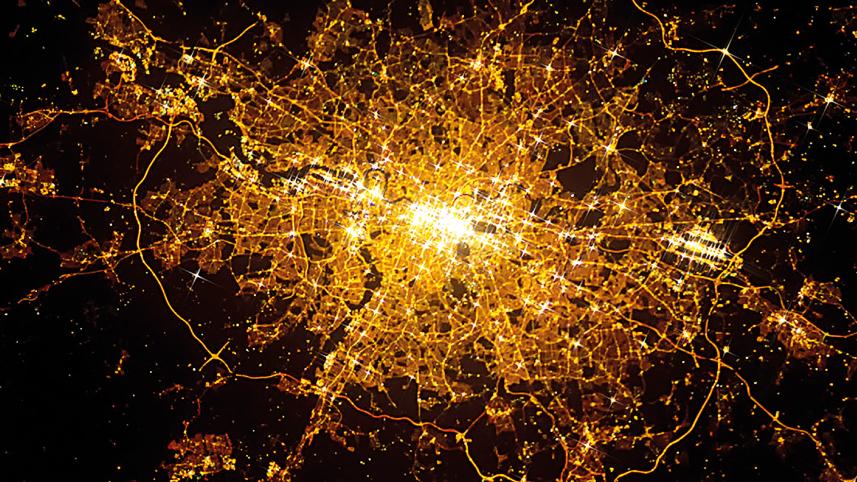Woes of being blinded by the light

Light pollution refers to the usage of excessive artificial light that is neither necessary nor energy efficient. At present, nearly 83 percent of the world's population live under skies polluted by light— as artificial light goes on to engulf the sky's entire terrain.
Climate stability of the world is already hanging by a thread; hence shifting attention to light pollution might seem like a utopian discussion but it is not. This article attempts to illustrate why we need laws to address light pollution for a better tomorrow. Apart from disrupting our ability to observe the night sky, light pollution adversely affects human health, meddles with the equilibrium of ecosystem, hinders astronomical research, and also contributes to energy wastage. Immediate measures are needed to tackle this anthropogenic disaster. But do we have any provisions on addressing light pollution within our environmental legislative landscape? Unfortunately, we do not.
Constant exposure to artificial light disrupts the circadian rhythm in human beings, causes headaches, sleep disorders, cardiovascular diseases, and other often fatal ailments. Alongside that, artificial light hinders melatonin production, a hormone that regulates some of the cardinal neuroendocrine functions of human body. In recent times, research has found correlation between melatonin deficiency and the prevalence of breast and prostate cancer. To make things worse, light pollution wreaks havoc on the wildlife as well. Over-illumination, for instance, has forced many species to lose their habitats and pushed them to the verge of extinction. Thus, the deleterious consequences associated with light pollution are responsible for getting millions of living beings on earth killed every year. However, measures to curb or regulate the use of artificial light are yet to be introduced— both at the national and the local levels.
Light pollution is also not a standalone hazardous phenomenon. Excessive artificial light destroys nitrate radicals and prevents the normal night-time reduction of atmospheric smog emitted from vehicles and factories, thereby leading to air pollution. Consequently, the major cities of our country always top the charts of the worst air equality indexes. That is how seemingly harmless over-illumination cater to debilitating condition of other elements of the environment.
Research opportunities are already nominal in our country. A dark sky aloof from artificial light is a prerogative for astronomical research. However, this seems like a rarity at present. Our youth is incredibly capable, and for the past few years they have been achieving brilliant feats in across dynamic research fields. Hence, it is our collective responsibility to ensure the best circumstances suited for astronomical research by opting for energy efficiency. International Dark Sky Association estimates that 35% of artificial light is wasted just by being poorly aimed or unshielded. A country like ours cannot afford to waste a huge chunk of electricity on over-illumination because power shortage already looms large as a major issue of concern.
Solution to curb light pollution starts with very easy methods like changing the light fixtures, using electricity when it is in fact needed, and adhering to rules regarding using artificial illumination sources. Light levels can be quantified by field measurement or mathematical modelling using isophote maps or light contour maps. International organisations like IDA and NASA are trying to raise awareness about the consequences of light pollution and its correlation with climate change. It is about time we started to initiate campaigns to educate general mass about light pollution. The primary requirement is the willpower to shift the paradigm.
Invention of light bulbs have changed the trajectory of modern science, but over usage of any resource is bound to beget miseries. Therefore, we have to be responsible while using electricity and illumination sources to save our present, and the future generations to come from the woes of being blinded by light. Several countries across the globe have incorporated provisions regarding light pollution in their laws but Bangladesh is yet to do so. The Environment Conservation Act 1995, the Wildlife (Conservation and Security) Act 2012, and the Bangladesh Biodiversity Act 2017 form part of the environmental legislative landscape of Bangladesh, but unfortunately, they are failing to keep up with international standards. It is high time we incorporated provisions regarding light pollution control in our environmental laws.
The writer is a student of law at Jahangirnagar University.



 For all latest news, follow The Daily Star's Google News channel.
For all latest news, follow The Daily Star's Google News channel.
Comments